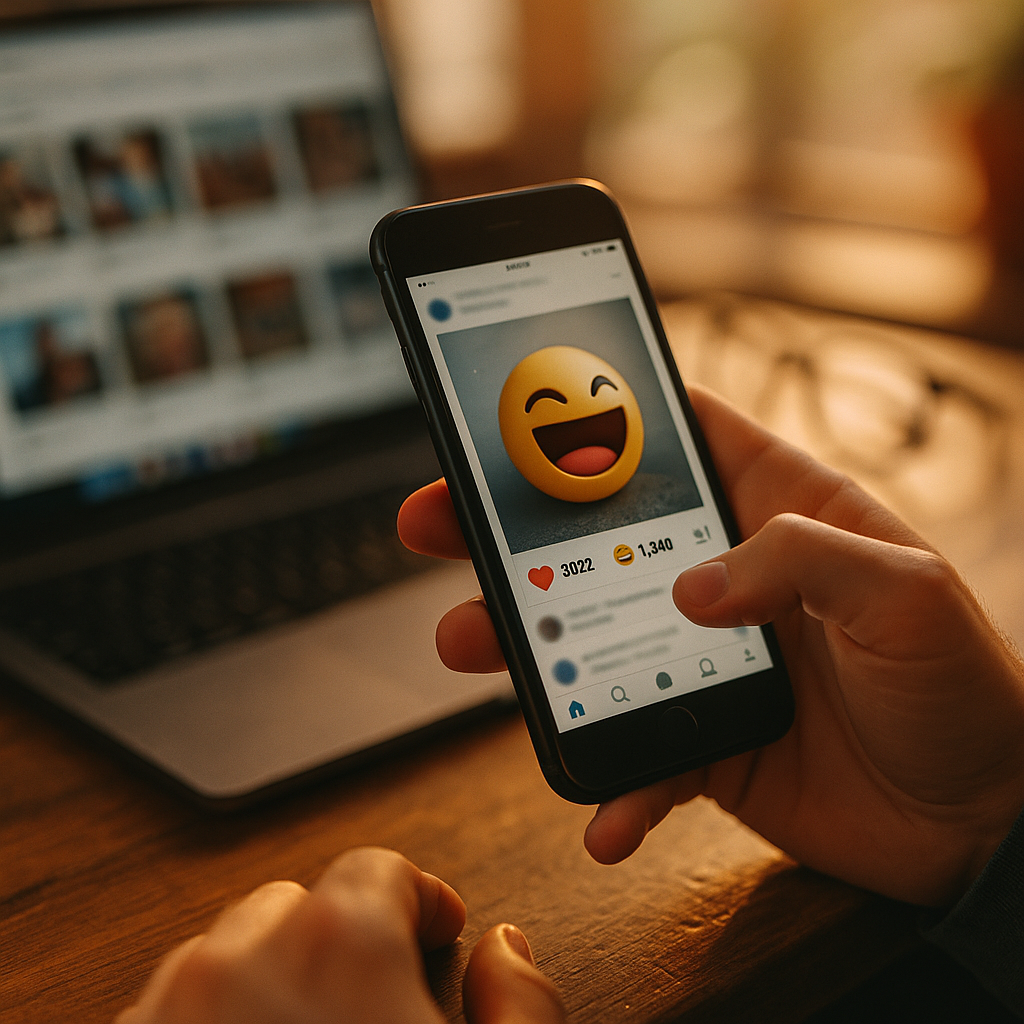Social media campaigns are constantly evolving, but one strategy remains compelling: using humor to engage audiences. This case study examines how a leading brand executed a social media campaign that successfully used humor to drive awareness, increase engagement, and boost sales. Read on to discover why laughter was their winning formula—and how you can replicate their success.
Why Humor Works in Social Media Marketing
Humor increases the shareability and memorability of content, making it a powerful tool for engagement campaigns. A 2024 Sprout Social report observed that 75% of consumers remember brands that use humor positively. Audiences scrolling through endless feeds are more likely to pause for content that entertains them, creating vital opportunities for brands to stand out amidst digital noise. Moreover, laughter builds emotional bonds, helping brands appear more human and relatable—foundations that foster lasting customer loyalty.
The Campaign: Introducing the “Laugh to Win” Challenge
In early 2025, QuickSip, a fast-growing beverage brand, decided to launch the “Laugh to Win” social media campaign. Their secondary keyword, humorous content marketing, was at the core of the campaign: users were invited to create and share short videos on TikTok and Instagram using QuickSip products in funny scenarios. The best submissions each week, determined by votes and brand judges, won exclusive prizes and brand merchandise. QuickSip’s campaign quickly went viral due to several strategic decisions.
Key Elements That Made the Campaign Go Viral
Analyzing what propelled QuickSip’s social media humor strategy, several key elements emerge:
- Tapping into User-Generated Content: QuickSip’s campaign relied on user creativity, leveraging authentic customer voices that resonated with their peers.
- Platform Choice: The team focused on TikTok and Instagram Reels—platforms where comedic, short-form video thrives and sharing is frictionless.
- On-Brand, Relatable Humor: QuickSip encouraged scenarios familiar to their youthful target audience, like awkward remote work meetings, “Monday morning” fails, or the quest for caffeine before sunrise.
- Transparent Judging & Real Rewards: Prizes were desirable and the selection process transparent, establishing trust and incentivizing participation.
- Mid-Campaign “React” Videos: Influencers and staff reacted to top entries live, increasing reach and bringing in fresh engagement midway through the campaign.
Measuring Humor’s Impact on Engagement and Sales
The results of this humor-driven brand awareness campaign were quantifiable and impressive. Leveraging real-time analytics, QuickSip found:
- 60% increase in follower growth on Instagram and TikTok within the eight-week campaign window.
- 120,000+ video submissions using the branded hashtag #LaughToWin.
- 30% lift in positive brand sentiment in social listening reports post-campaign.
- 18% sales increase for featured products during and immediately after the campaign (according to their Q1 2025 sales report).
The comedic tone not only boosted online conversations but also established QuickSip as a brand customers felt excited to share with friends, demonstrating how humor can be a catalyst for both digital engagement and tangible business outcomes.
Lessons Learned: Ensuring Humor Lands Well
Employing humor requires sensitivity and an intimate understanding of one’s audience. For QuickSip, feedback loops were critical; real-time monitoring ensured nothing trended negatively. Their “humor code” included avoiding controversial topics and regularly cross-checking content with diverse team members to ensure inclusivity and respect. This careful approach maximized reach while minimizing risk—a model that brands in any sector should emulate for humor-based social media messaging.
How to Replicate This Humor-Driven Strategy
If your brand is considering a similar path, use this step-by-step approach to incorporate humorous campaign tactics effectively:
- Know your audience: Use data-driven personas to identify what your community finds genuinely funny.
- Recruit creators and influencers: Partner with personalities who align with your values and can authentically deliver your brand’s humor.
- Encourage participation: Make it easy (and rewarding) for users to submit or reshare content.
- Respond and adapt in real time: Monitor performance, spotlight the best content, and respond to feedback to keep momentum positive.
- Measure and analyze results: Set clear KPIs and use robust analytics to evaluate reach, sales, and sentiment shifts.
With thoughtful execution, humor can transform passive viewers into enthusiastic brand advocates.
Frequently Asked Questions
-
What makes humor effective in social media marketing?
Humor humanizes brands, increases content shareability, and fosters stronger emotional connections. When executed thoughtfully, it attracts engagement and strengthens brand recall. -
How can brands avoid “tone-deaf” humor?
Prioritize diversity in your creative team, rigorously vet content, and continuously listen to audience feedback to ensure jokes are inclusive and inoffensive. -
What metrics best evaluate a humorous social campaign?
Engagement rates, hashtag usage, follower growth, sentiment analysis, and sales impact are key performance indicators of a successful humor-based campaign. -
Which platforms are best for humor-driven campaigns?
Short-form video platforms like TikTok and Instagram Reels are ideal due to their large, entertainment-focused audiences and viral sharing mechanisms. -
Should all brands use humor in their campaigns?
Not always. Humor should align with your brand identity and audience preferences. If humor feels forced or off-brand, consider alternative engagement strategies.
Humor, when harnessed with care and creativity, can profoundly impact your brand’s reach and perception. Follow the principles of this case study, and your next social media campaign may be remembered for all the right reasons—long after the laughter fades.
